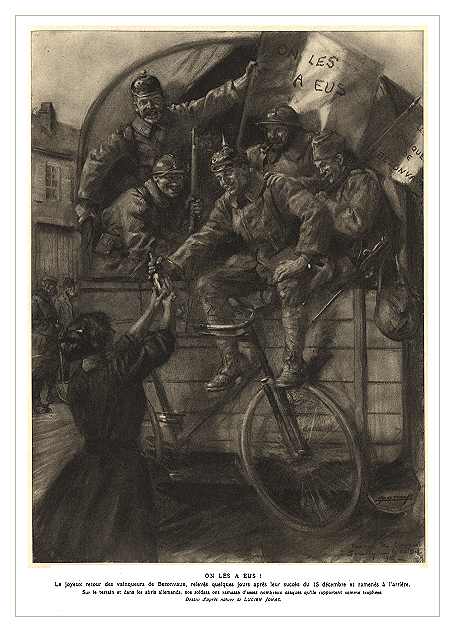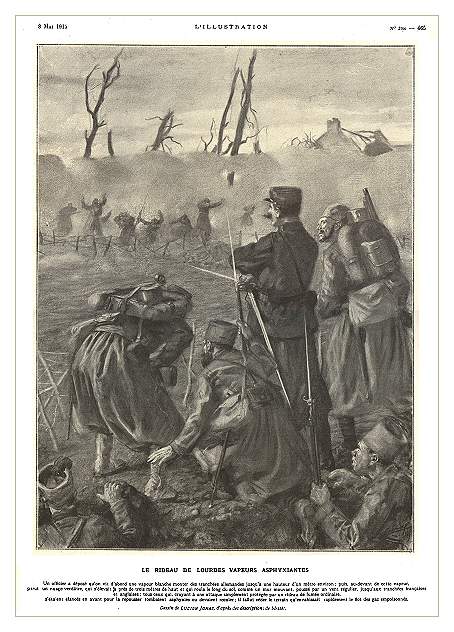

the Spirit of France Defiant and Triumphant
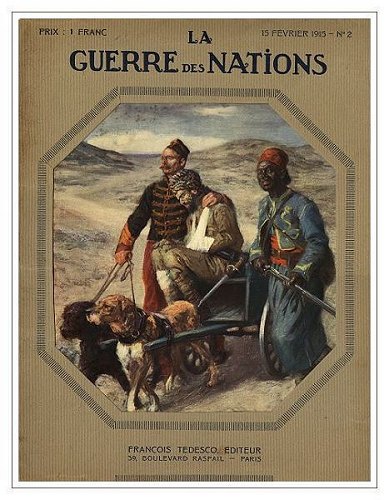
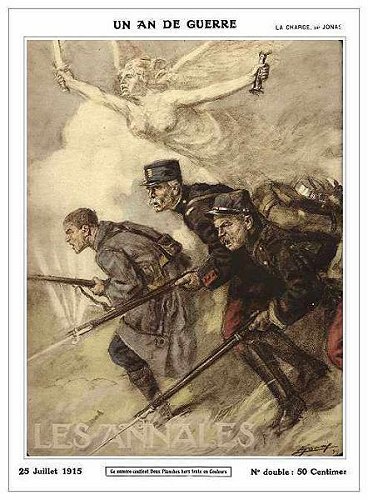
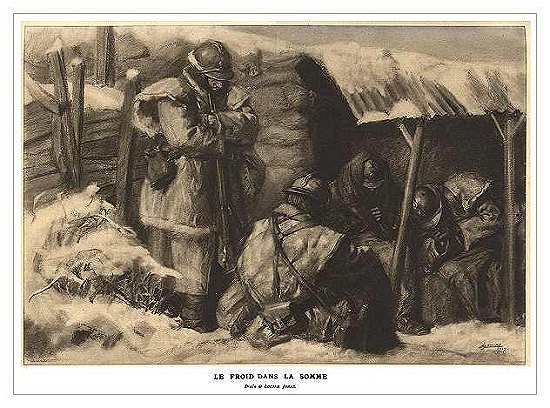

Lucien Jonas was one of the more prolific Great War illustrators. A gifted and talented artist, he was mobilized in December of 1914 and in February of 1915 was offically accredited as 'military painter secunded to the Musée de l'Armée' in Paris. During the war he travelled extensively along all sections of the front lines and produced thousands of drawings, oil paintings, charcoals, sketches and illustrations of all kinds. His work was reproduced in the media of course and published in a multitude of magazines and books worldwide. About one hundred of his most striking works were originally published in 'l'Illustration'. A number of his illustrations were printed in color in 'Les Annales' as centerfolds and two page spreads. He was also greatly appreciated as portraitist of military leaders, of 'soldierly types' and of soldiers in many various national uniforms.
After the war hundreds of his sketches and drawings were used to illustrate a massive 3 volume history of the war called 'La Guerre Racontée par Nos Généraux' published by la Librairie Schwarz in Paris. In a curiously roundabout way but in a striking and somber style, his drawings were set to wood-cuts by 4 different craftsmen and were profusely used to illustrate the publication. The resulting books were an ode to French patriotism and the bloody sacrifices sustained by the army and her gallant soldiers. Many of his oil paintings were used as original color covers for the magazine 'La Guerre Documentée', an artistic magazine dealing with the war, also published by 'la Librarie Schwarz'. Several of these original oil paintings are now on display at the 'Fort de la Pompelle', a historic monument open to the public nearby Reims, France.
In fact, in contrast to many other French war-artists such as Francois Flameng, Georges Scott, J.Simont, L. Sabbatier etc. from the start of the war the work of Lucien Jonas was quite somber and bleak, full of pathos, suffering and religious symbolism combined with a fierce patriotism and love of France. He portrays soldiers and officers as equals in the unrelenting struggle against the Boche, both heroic and unflinching in their duty. They are one and all prepared to give their lives in the supreme sacrifice if needs be. His characters are not gentlemen engaged in war, but Gallic warriors filled with a cold fury and hatred of the German invader. His art is that of a revanchist. Germany must be made to pay. At the same time he was capable of illustrating a scene behind the front with touching tenderness and sadness, even though here too there are abundant hints that Germany is the cause of all the suffering endured by the population of France.
Even though French artists such as George Scott and Francois Flameng are now better known, Lucien Jonas was perhaps the consummate and most representative French war-time artist of them all. His work was published in hundreds of different publications and books, both in Allied and Central Powers countries and so helped determine how people viewed the war in terms of mental imagery. Mixing veracity and allegory with a heavy dose of patriotism, Lucien Jonas was a true master of military illustration, an effective propagandist and talented portrayor of war-time national myths and pathos. In this present day and age, his style appears at times to be heavy-handed and overly sentimental and therefore exagerratedly emotional. From his all too apparent succes during the war years, it would seem that however overbearing his work now seems, it was certainly in accord with the prevailing tastes of the time.
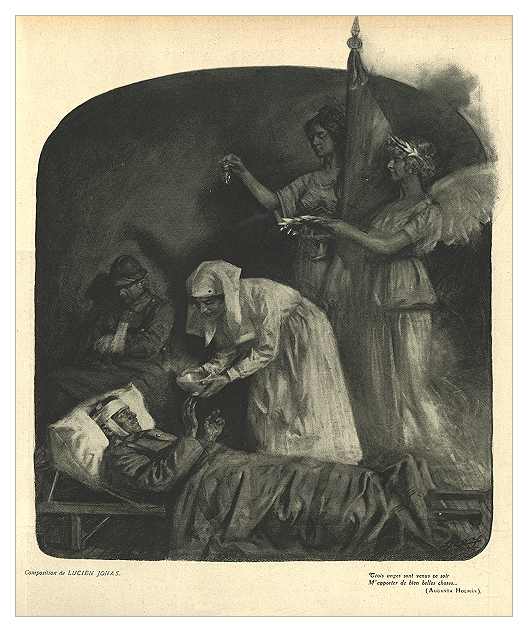
from 'l'Illustration'
from 'Les Annales' and 'London Illustrated News' and 'Lectures...'
from 'La Guerre Racontéee par Nos Généraux'
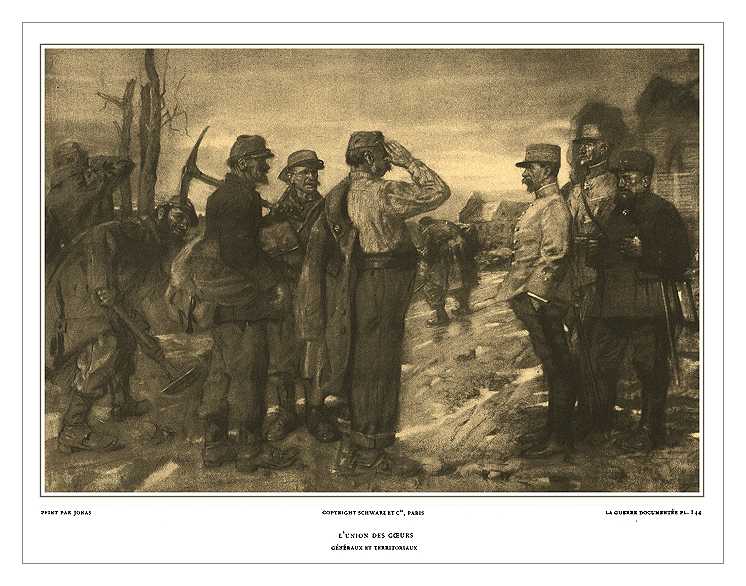
'Hearts United : Generals and Territorials'
from 'La Guerre Documentée'
from 'Le Miroir'
The Third Anniversary of Verdun
from 'Collier's' an American magazine
Doughboy Comforting a Belgian Grandmother
from 'les Annales'
post-war work from 'l'Illustration 1934 / 1940'
